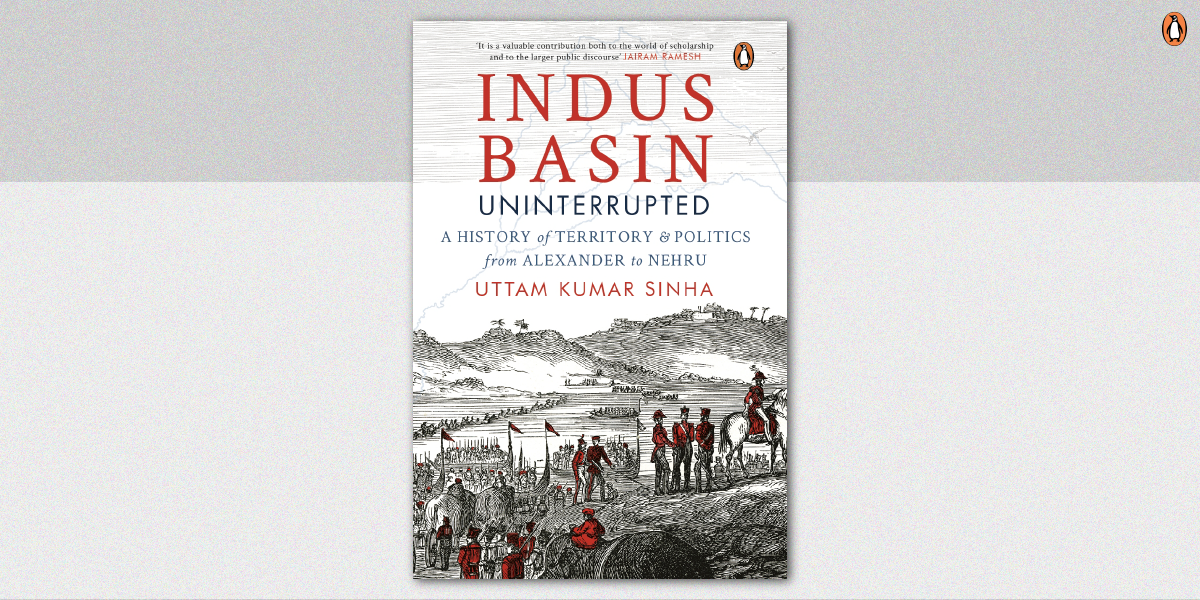
In Indus Basin Uninterrupted: A History of Territory and Politics from Alexander to Nehru, Uttam Kumar Sinha paints a vivid historical narrative of the Indus Basin and how it shaped India’s history. The book looks at the interplay of the territory and politics through the ages, starting from the Indus Valley Civilization to the medieval and colonial periods till the time of Partition and the difficult years of negotiation that led to the treaty. Here is an excerpt from the book that tells us what gave birth to the idea of the Bhakra Dam.
**
The history of canals in the Indus basin offers a fascinating narrative of its interactions with power and knowledge, and how the rivers were negotiated through formal engineering and localized skills. It brought forth, in significant ways, the pioneering role of the civil engineers whose understanding of the hydrology advanced the irrigation system. However, engineers and civil administrators often disagreed on how to run the canal system. While the engineers believed in their surveys, the administrators had their own ideas about the administration of science. Notwithstanding the tussle, many engineers did impress, through constant interactions, the administrators of the overall imperial imperatives of
. . . control, profit and colonisation.
The overriding economics created a new class of administrators referred to as the ‘colonial-official scientist’. This new class formation in a class-conscious England did not go unnoticed. In 1870, the Spectator of London described the qualities required of the engineer working in India thus:
The ideal engineer for India is a man who will take £1000 pounds a year as his average income for life, and insist that all under him shall be content with their wages . . . who will regard an offer of a commission from sub-contractors as a deadly insult; who can keep accounts like a bank clerk . . .
For the engineers, the Indus basin presented a new work culture and a new professional outlook. Some of the colonial civil engineers in the Punjab in the latter half of the nineteenth century were making a scientific mark by writing professional papers on the connection between engineering and management of nature. Prominent among them was Proby Cautley and his works, Report on the Ganges Canal Works in 3 volumes (1860) and A Disquisition on the Heads of the Ganges and Jumna Canals (1864). Other significant works that become a repository of irrigation knowledge and reference include Captain Haywood’s Practical Gauging of Rivers (1870) followed in 1879–80 by four papers published in the proceedings for the Institution of

Civil Engineering: W.H. Grethed’s Irrigation in Northern India (1872); Robert Buckley’s Keeping Irrigation Canals Clean of Silt (1879) and Movable Dams in Indian Weirs (1880); and C. Greaves’s Evaporation and Percolation (1879). All these findings had a deep impact on the irrigation system in the Indus basin. Others engaged in important comparative studies and brought in the best practices from other water development works in Europe. For example, Baird Smith’s Italian Irrigation (1855), Allen Wilson’s Irrigation in India and Spain (1867) and as earlier mentioned Scott-Moncrieff’s Irrigation in Southern Europe (1867–68).
At times, the sheer perchance of a natural site inspired impossible engineering as when the governor of Punjab, Louis Dane, an engineer who shifted to administration, floated down the Sutlej in 1908 from his official tour to Bilaspur State and saw with transfixed gaze
. . . a narrow gauge with high abutments . . .
that made him in wonderment conceptualize a high storage dam which had never been built before in the world. Dane’s restless eagerness led to many investigations on the feasibility of the storage dam before, in 1915, the spirited H.W. Nicholson, working in the Punjab Irrigation Department, volunteered to take on the task. In1919, after extensive study, a detailed proposal was put forward that
. . . visualised a dam at Bhakra across the Sutlej, 390 ft high impounding 2·50 million acre-ft, of water to extend irrigation in the famine areas of Hissar, Rohtak and all the adjoining states of Patiala, Jind, Faridkot and Bikaner.
And thus was born the idea of Bhakra Dam.









